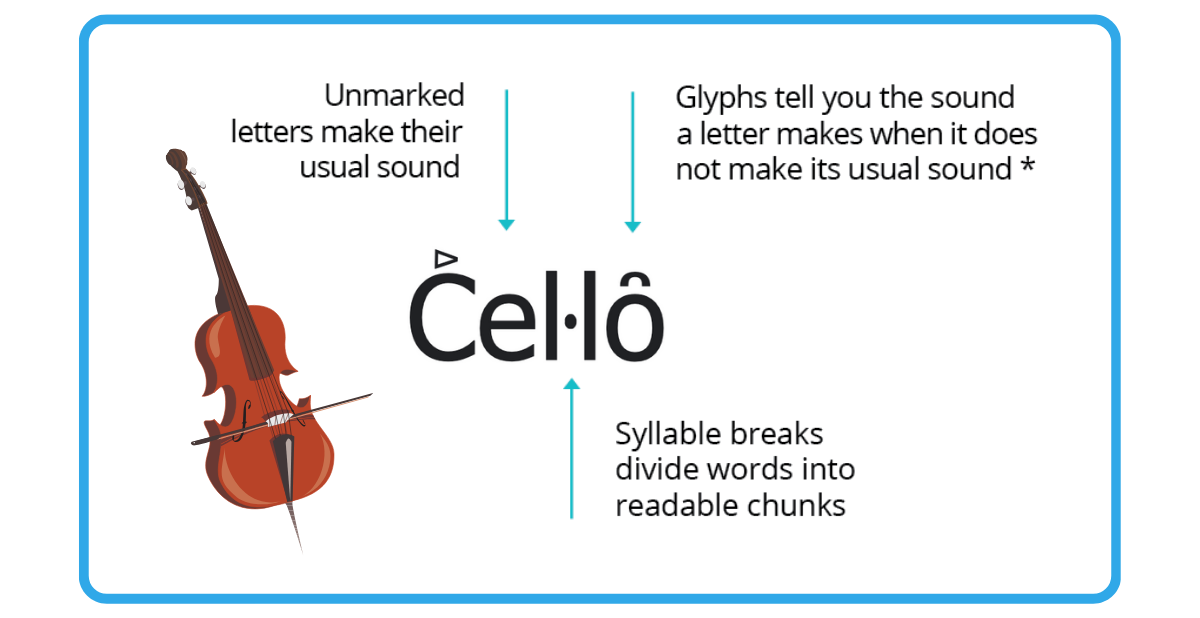How Readable English Supports Struggling Readers, ML Students, and Students with Dyslexia
In education, ensuring that every child can read proficiently is a cornerstone of academic success. However, many students face significant...
K-12Discover how Readable English is transforming reading instruction |
PROGRESS MONITORINGEasily assess and monitor growth with data-driven insights and reporting tools |
PROFESSIONAL SERVICESDiscover the services that support your success, from virtual training to expert coaching |
INDIVIDUALSStrengthen your reading skills with an interactive app tailored to your learning needs |
PARENTSEmpower your child's reading journey with an interactive app and expert strategies for home support |
|

|
Rethinking Reading: How One District Transformed Instruction (SmartBrief)Discover how a bold shift in reading instruction helped struggling learners thrive - and the critical role Readable English played in their success.
|
RESEARCH & RESULTSExplore peer-reviewed studies and real-world case studies on Readable English in action |
BLOGExplore articles on feature highlights, research deep-dives, and the latest literacy insights |
EBOOKDownload the ebook Why Learning to Read English is So Hard and how to Make it Easier |
CUSTOMER STORIESDiscover how educators and administrators are transforming literacy with Readable English |
RESOURCE AND PRODUCT ENABLEMENT LIBRARYFind essential educational references and instructional materials to enhance teaching |
FAQSFind essential educational references and instructional materials to enhance teaching |
NEWS & EVENTSStay up to date with media coverage, webinars, and upcoming events featuring Readable English |
|
|
Rethinking Reading: How One District Transformed Instruction (SmartBrief)Discover how a bold shift in reading instruction helped struggling learners thrive - and the critical role Readable English played in their success. |
1 min read
 Anna Boyle
:
Jun 17, 2025
Anna Boyle
:
Jun 17, 2025
Orthographic mapping is the process by which readers store written words in long-term memory, allowing for instant, effortless recognition. Understanding this process is crucial for designing effective reading instruction, especially for beginning and struggling readers.
In this post, we’ll explore key statistics and insights behind orthographic mapping, the role of phonemic awareness, and how tools like Readable English can accelerate learning outcomes.
Download the Orthographic Mapping Infographic as PDF.

Orthographic mapping is the brain’s process for storing written words so they can be retrieved instantly, without needing to decode them each time. It's how fluent readers recognize words on sight, not through memorization, but through a deep understanding of the letter-sound structure of language.
The number of exposures needed to orthographically map a word depends on a reader's proficiency level:
Beginning Readers: Typically need 5-20 exposures
Fluent Readers: Can map a word in 1-4 exposures
Highly Proficient Readers (Grade 3-4+): May only need 1 exposure
Fast-mapping readers can learn up to 5,000 words by the end of third grade. (Note: Struggling readers may need more exposures or targeted intervention.)
Phonemic awareness - the ability to hear and manipulate individual sounds in words - is a key factor in successful orthographic mapping. Students with strong phonemic skills map words 2–3 times faster than those with weaker skills.
Decodable words (e.g., snap, test, brick) have consistent phoneme-grapheme correspondences and are easier to map.
Irregular words (e.g., laugh, yacht, busy) are harder to map and require more exposures.
On average, students learn decodable words 50% faster than irregular ones.
Readable English is a system that makes sound-spelling patterns visually transparent through a markup system. Here's how it supports orthographic mapping:
Makes complex spelling patterns easy to decode
Reinforces memory through repeated, scaffolded exposure
Supports 2x faster improvement in fluency and comprehension compared to traditional methods
Students using Readable English show twice the rate of improvement in both fluency and comprehension compared to control groups.
Combine systematic phonics with explicit phonemic awareness instruction
Avoid rote memorization of irregular word lists
Provide repeated, meaningful exposure in context
Use tools like Readable English to make decoding intuitive
Orthographic mapping is the cornerstone of skilled reading. By focusing on phonemic awareness, decodable word exposure, and effective instructional tools like Readable English, educators can help all students, especially those who struggle, become fluent, confident readers.
Want to see how Readable English works in action? Contact us or schedule a demo today!

In education, ensuring that every child can read proficiently is a cornerstone of academic success. However, many students face significant...
.png)
A recent instructional report by Dr. Shawn Anthony Robinson from the University of Wisconsin–Madison’s Wei LAB shines a powerful spotlight on a...

At first glance, words like five, move, and gone look simple. But for beginning readers, decoding these words can be far from easy. This infographic...